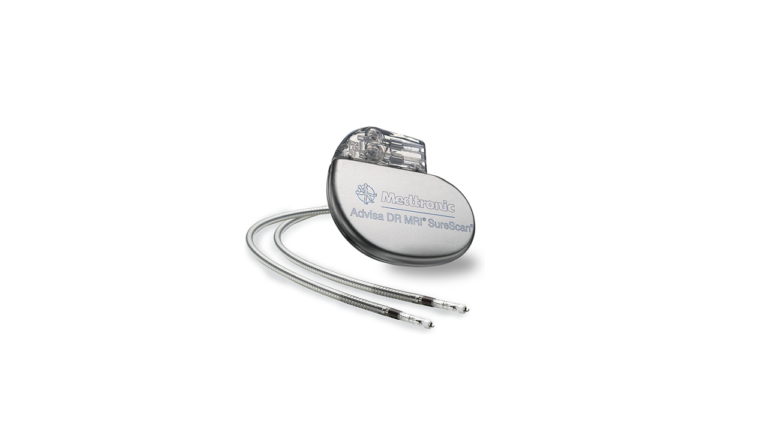Pacemaker and implantable defibrillator
Pacemaker
A pacemaker is a titanium device a few centimetres in size that is implanted in the chest under the skin. The battery and electronics are housed in the casing. The pacemaker is connected to the heart muscle via a probe. Pacemakers are used when the heart rate is too slow or when there is a conduction disturbance from the atria to the main chamber of the heart. The pacemaker emits electrical impulses that stimulate the heart muscle to beat normally.
Implantable defibrillator (ICD)
ICD = Implantable Cardioverter Defibrillator
Unlike a pacemaker, a defibrillator is implanted when a patient's heart is pumping too weakly or when a patient has been resuscitated for severe arrhythmia or when severe and rapid ventricular actions (ventricular fibrillation or ventricular tachycardia) have occurred.
The heart is briefly stopped by a shock of electricity from the defibrillator so that it can then find its normal rhythm again, thereby saving the life of the affected person.
An implantable cardioverter defibrillator (ICD) automatically detects ventricular fibrillation and responds specifically to this event within a few seconds.
Behaviour with ICDs
Instead, place the defi electrodes at least 2.5 cm away from the implanted device. However, if the ICD delivers shocks to the patient (i.e., the patient's muscles contract in a manner observed during external defibrillation), allow 30 to 60 seconds for the ICD to complete the treatment cycle. Occasionally, the analysis and shock cycles of automatic ICDs and AEDs conflict.

